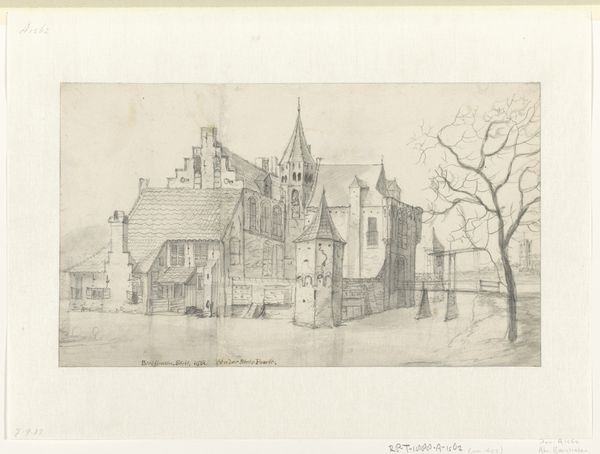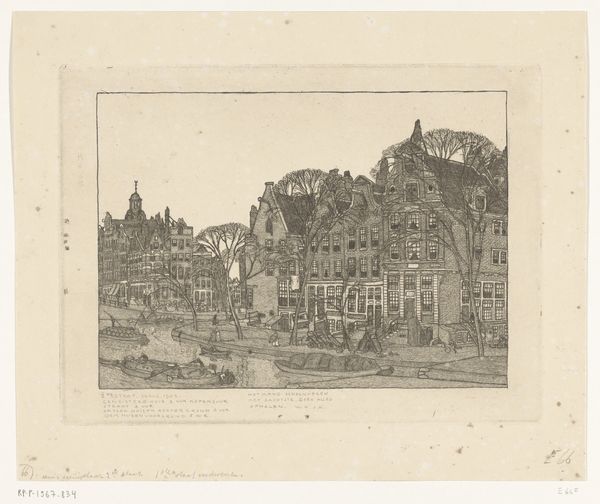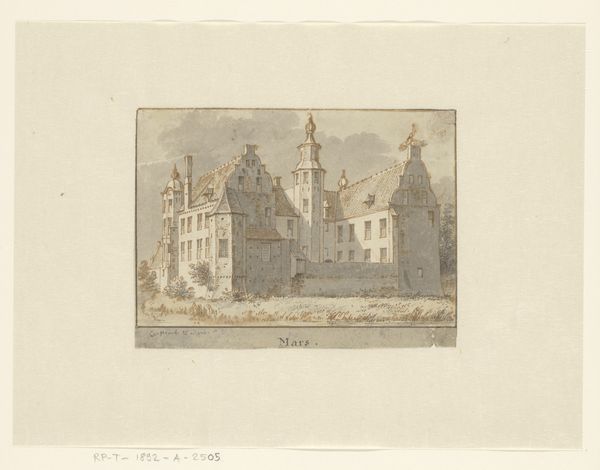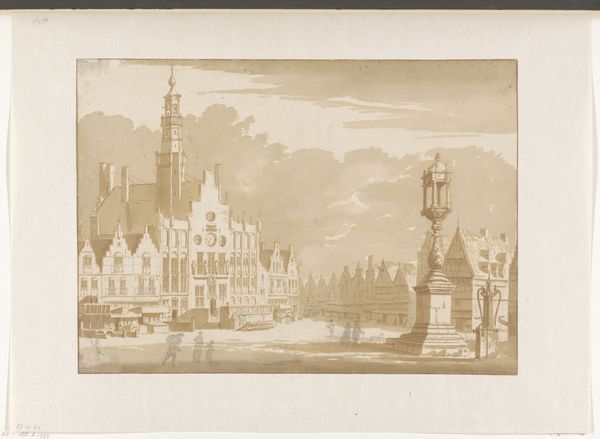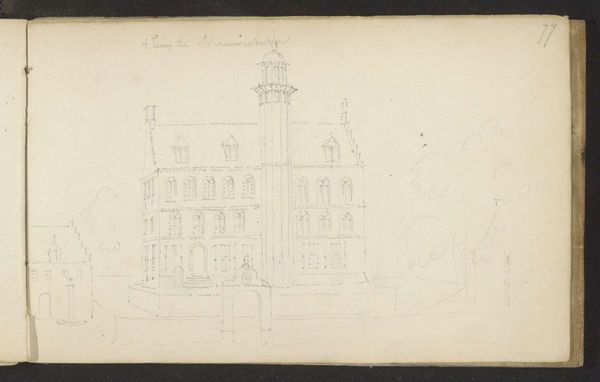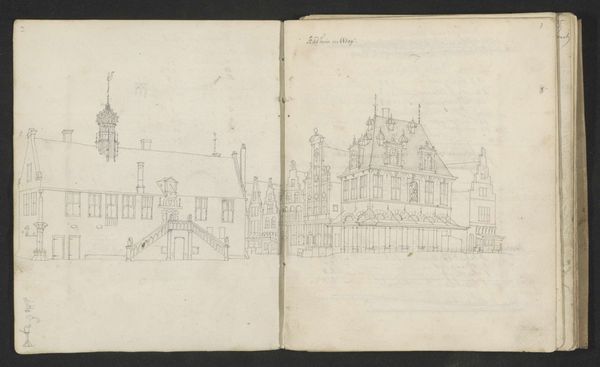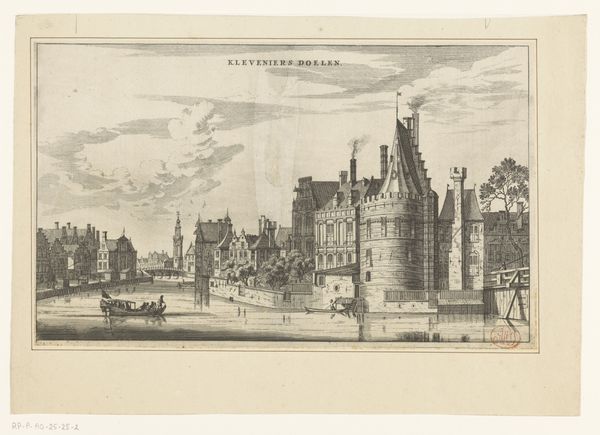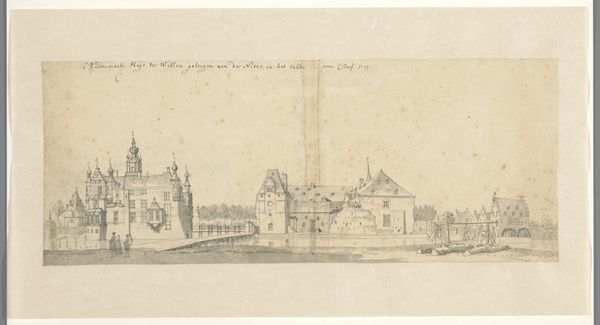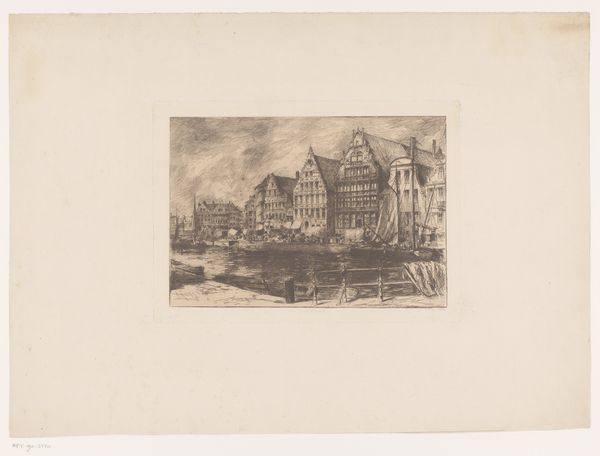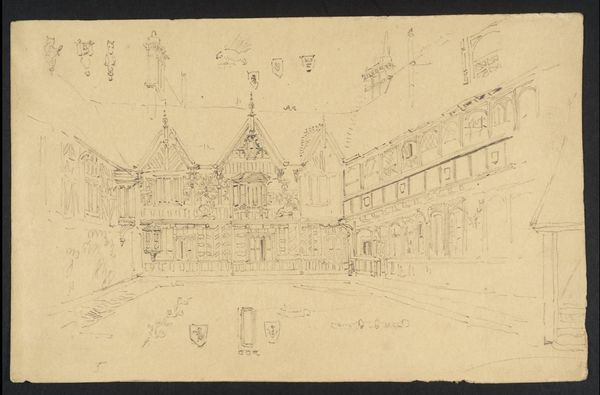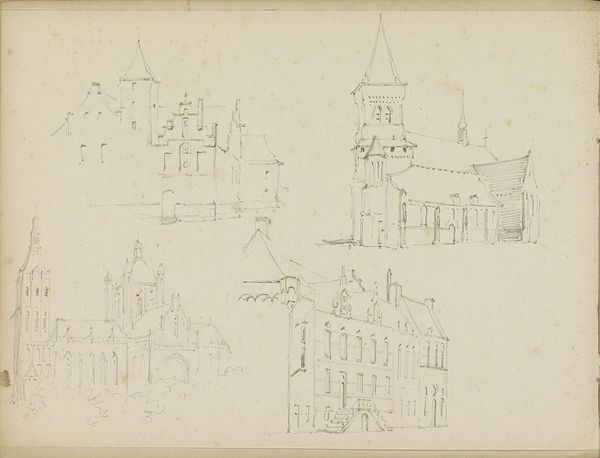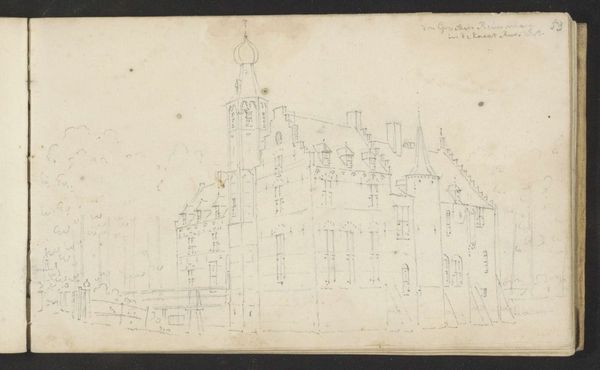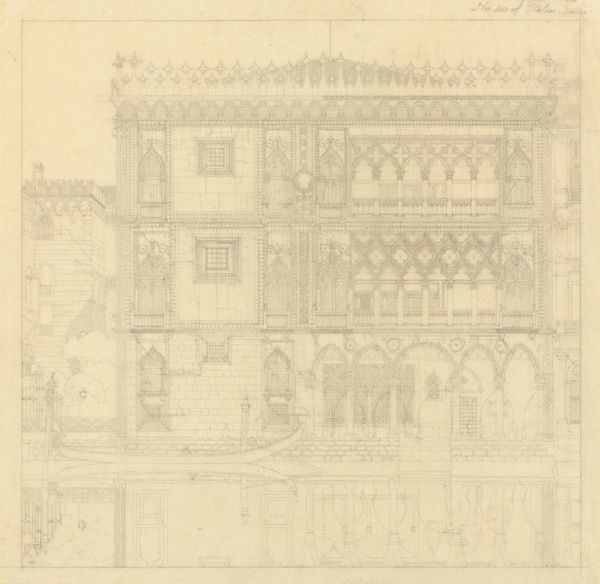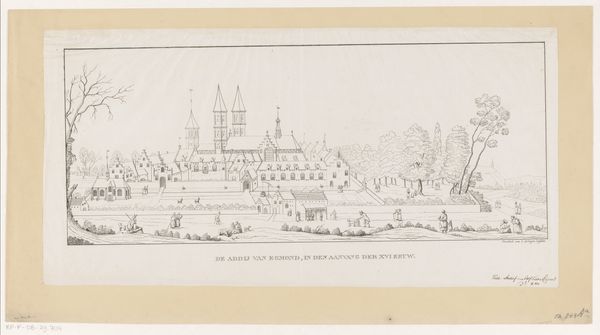
drawing, pencil
#
drawing
#
dutch-golden-age
#
pencil sketch
#
landscape
#
pencil
#
cityscape
#
street
Dimensions: height 195 mm, width 307 mm
Copyright: Rijks Museum: Open Domain
Curator: Looking at this delicate pencil drawing by Jan Abrahamsz. Beerstraten from the 17th century, titled "Rokin en een deel van de Nieuwezijdskapel te Amsterdam," I am immediately transported to that time. What's your take? Editor: It feels like a half-remembered dream. All muted tones and delicate lines, hinting at detail without quite committing. Melancholy, maybe? There's a sense of stillness about it. Curator: It’s interesting you pick up on stillness. To me, it evokes a quieter time. The sketch meticulously captures the architectural details along the Rokin canal with the Nieuwezijdskapel standing prominently among the buildings. The sharp angles and geometries are almost hauntingly calm, it also depicts a sense of community. Editor: I'm struck by how Beerstraten uses the pencil to convey a strong sense of depth, especially given the limited tonal range. Those towering gables almost feel like figures themselves, each with its own character. What do these kind of buildings evoke within their original time? Curator: Dutch Golden Age architecture, and particularly these canal houses, symbolized prosperity and civic pride. They represented the power of trade and the rising merchant class, while the Kapel suggested enduring faith. This whole arrangement is not so simple however - because from another angle the sketch might symbolize urban planning. Editor: Interesting! Each façade almost feels like a carefully chosen word in a larger visual sentence, with their symmetry acting as rhymes to guide our attention across this image. What kind of purpose do you believe drawings like this might have been made for at the time? Curator: That is what captures my curiosity, a sketch is typically considered either a memory, a reference, or planning phase. Either the artist wanted to encapsulate a nostalgic moment of place, maybe they wanted to remember it visually, or perhaps it even aided urban architecture during its moment. Editor: Well, looking at it through our modern eyes, maybe we are searching for meanings that were never even consciously there for the artist. Curator: Perhaps that is always the predicament when interpreting visual history.
Comments
No comments
Be the first to comment and join the conversation on the ultimate creative platform.
